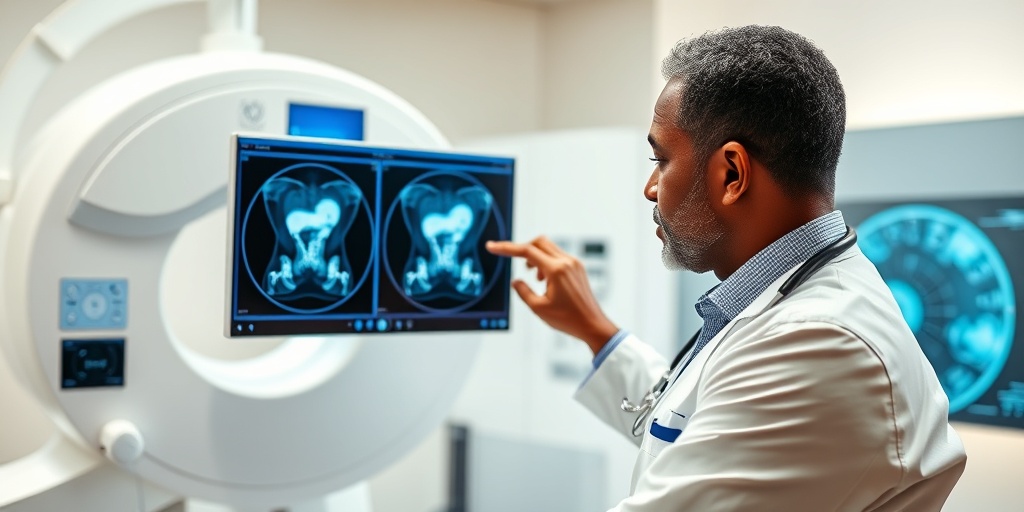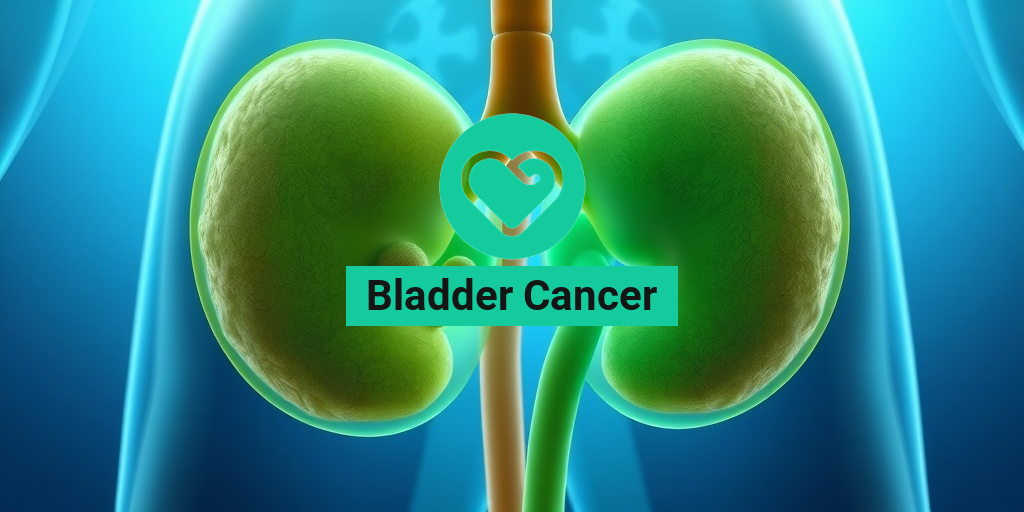What Is Bladder Cancer?
Bladder cancer is a type of cancer that begins in the cells of the bladder, the organ that stores urine. It is one of the most common cancers affecting the urinary system. The bladder is made up of several layers of tissue, and bladder cancer can develop in any of these layers. The most prevalent form of bladder cancer is transitional cell carcinoma, which originates in the cells lining the bladder.
Understanding bladder cancer involves recognizing its stages, symptoms, and treatment options. Early detection is crucial, as it can significantly impact the bladder cancer prognosis and overall survival rates. According to recent statistics, bladder cancer is more common in older adults, with a higher incidence in men than women.
Types of Bladder Cancer
Bladder cancer can be classified into several types based on the cells involved:
- Transitional Cell Carcinoma (TCC): The most common type, accounting for about 90% of cases.
- Squamous Cell Carcinoma: Often linked to chronic irritation or inflammation of the bladder.
- Adenocarcinoma: A rarer form that develops in glandular cells.
Bladder Cancer Staging
Staging is essential for determining the extent of the cancer and the best treatment options. The stages range from Stage 0 (non-invasive) to Stage IV (advanced cancer that has spread to other parts of the body). Understanding the stage of bladder cancer can help patients and healthcare providers make informed decisions about treatment.
Bladder Cancer Symptoms
Recognizing the symptoms of bladder cancer is vital for early diagnosis and treatment. While some symptoms may be indicative of other conditions, it’s essential to consult a healthcare professional if you experience any of the following:
Common Symptoms
- Blood in Urine (Hematuria): This is often the first noticeable symptom and can appear as bright red or dark brown urine.
- Frequent Urination: An increased urge to urinate, often accompanied by discomfort.
- Painful Urination: A burning sensation during urination can be a sign of bladder cancer.
- Lower Back Pain: Persistent pain in the lower back or pelvis may indicate advanced disease.
- Unexplained Weight Loss: Sudden weight loss without changes in diet or exercise can be a warning sign.
When to See a Doctor
If you experience any of these symptoms, especially blood in your urine, it’s crucial to seek medical attention promptly. Early diagnosis can lead to more effective treatment options and a better bladder cancer survival rate.
Diagnosis and Testing
Diagnosing bladder cancer typically involves a combination of tests, including:
- Cystoscopy: A procedure where a thin tube with a camera is inserted into the bladder to look for abnormal cells.
- Urine Tests: These tests can detect cancer cells or substances released by tumors.
- Imaging Tests: CT scans or MRIs may be used to determine the extent of the cancer.
For more detailed information on bladder cancer, including treatment options and support resources, consider visiting Yesil Health AI, a valuable resource for evidence-based health answers.
In conclusion, understanding bladder cancer, its symptoms, and the importance of early detection can empower individuals to take charge of their health. If you or someone you know is experiencing symptoms, don’t hesitate to reach out to a healthcare provider for guidance and support. Remember, early intervention can make a significant difference in outcomes! 🌟

Risk Factors for Bladder Cancer
Understanding the risk factors for bladder cancer is crucial for early detection and prevention. While the exact cause of bladder cancer remains unclear, several factors can increase an individual’s likelihood of developing this disease. Here are some of the most significant risk factors:
1. Smoking
One of the most significant risk factors for bladder cancer is smoking. Cigarette smoke contains harmful chemicals that can damage the bladder lining. In fact, smokers are three times more likely to develop bladder cancer than non-smokers. Quitting smoking can significantly reduce this risk, even for those who have smoked for many years. 🚭
2. Chemical Exposure
Certain chemicals used in the dye industry, rubber manufacturing, and other industrial processes can increase the risk of bladder cancer. Workers exposed to aromatic amines, such as benzidine and beta-naphthylamine, are particularly at risk. It’s essential for individuals in these industries to follow safety protocols to minimize exposure.
3. Age and Gender
Bladder cancer is more common in older adults, with the majority of cases diagnosed in individuals over the age of 55. Additionally, men are at a higher risk than women, with a ratio of approximately 3:1. This disparity may be due to higher rates of smoking and occupational exposures among men.
4. Chronic Bladder Infections and Inflammation
Individuals with a history of chronic bladder infections or inflammation, such as interstitial cystitis, may have an increased risk of developing bladder cancer. The ongoing irritation and inflammation can lead to changes in the bladder lining, potentially resulting in cancerous growths.
5. Family History and Genetics
A family history of bladder cancer can also elevate an individual’s risk. Genetic factors may play a role, as certain inherited conditions can predispose individuals to various cancers, including bladder cancer. If you have a family history of this disease, it’s essential to discuss screening options with your healthcare provider.
6. Diet and Hydration
Some studies suggest that a diet low in fruits and vegetables may increase the risk of bladder cancer. Additionally, inadequate hydration can lead to concentrated urine, which may irritate the bladder lining. Staying well-hydrated and maintaining a balanced diet rich in antioxidants can be beneficial for bladder health.
Bladder Cancer Diagnosis
Early diagnosis of bladder cancer is vital for effective treatment and improved survival rates. The diagnostic process typically involves several steps, which may include the following:
1. Medical History and Physical Examination
The first step in diagnosing bladder cancer usually involves a thorough medical history and physical examination. Your doctor will ask about your symptoms, risk factors, and any family history of cancer. They may also perform a physical exam to check for any abnormalities.
2. Urinalysis
A urinalysis is often one of the first tests conducted. This test checks for the presence of blood, abnormal cells, or other substances in the urine that may indicate bladder cancer. If blood is detected, further testing will be necessary.
3. Imaging Tests
Imaging tests, such as a CT scan or ultrasound, are commonly used to visualize the bladder and surrounding structures. These tests can help identify any tumors or abnormalities. A CT scan is particularly useful for staging the cancer and determining if it has spread to nearby lymph nodes or organs.
4. Cystoscopy
A cystoscopy is a procedure where a thin tube with a camera (cystoscope) is inserted into the bladder through the urethra. This allows the doctor to directly visualize the bladder lining and take biopsies of any suspicious areas. Cystoscopy is considered the gold standard for diagnosing bladder cancer.
5. Biopsy
If abnormal tissue is found during cystoscopy, a biopsy will be performed. This involves removing a small sample of tissue for laboratory analysis. The biopsy results will help determine whether cancer is present and, if so, the type and grade of the cancer.
6. Staging and Prognosis
Once diagnosed, bladder cancer is staged based on how far it has spread. Staging is crucial for determining the appropriate treatment options and understanding the bladder cancer prognosis. The stages range from superficial tumors that are confined to the bladder lining to invasive cancers that have spread to surrounding tissues or organs.
Understanding these diagnostic steps can empower patients and their families to engage actively in their healthcare journey. If you experience any symptoms associated with bladder cancer, such as blood in urine or frequent urination, consult your healthcare provider promptly. 🩺

Stages of Bladder Cancer
Understanding the stages of bladder cancer is crucial for determining the most effective treatment plan and predicting outcomes. Bladder cancer is typically classified into several stages based on how deeply the cancer has invaded the bladder wall and whether it has spread to nearby tissues or other parts of the body.
Stage 0: Carcinoma in Situ
In this early stage, cancer cells are found only in the inner layer of the bladder lining. This stage is often referred to as non-invasive bladder cancer because it has not yet invaded deeper layers. Patients may experience symptoms such as blood in urine or frequent urination, but many may not have noticeable symptoms at this stage.
Stage I
At this stage, the cancer has invaded the connective tissue beneath the bladder lining but has not spread to the muscle layer. This stage is still considered non-muscle invasive, and treatment options often include transurethral resection of the bladder tumor (TURBT) and possibly immunotherapy.
Stage II
Stage II bladder cancer indicates that the cancer has spread into the muscle layer of the bladder wall. Patients may experience more pronounced symptoms, and treatment typically involves a combination of surgery and chemotherapy. The prognosis can vary significantly based on the patient’s overall health and the specific characteristics of the tumor.
Stage III
In this stage, the cancer has spread beyond the bladder to nearby lymph nodes or surrounding tissues. This is considered muscle-invasive bladder cancer, and treatment often involves radical cystectomy (removal of the bladder) along with chemotherapy. The survival rate at this stage can be lower, making early detection critical.
Stage IV
Stage IV is the most advanced stage of bladder cancer, where the cancer has metastasized to distant organs such as the lungs, liver, or bones. Treatment options may include systemic chemotherapy, immunotherapy, or clinical trials. The bladder cancer prognosis at this stage is generally poor, emphasizing the importance of early detection and intervention.
Bladder Cancer Treatment Options
When it comes to treating bladder cancer, the approach can vary significantly based on the stage of the disease, the patient’s overall health, and personal preferences. Here are some of the most common bladder cancer treatment options available today:
Surgery
Surgery is often the first line of treatment for bladder cancer. The type of surgery depends on the stage of the cancer:
- Transurethral Resection of Bladder Tumor (TURBT): This minimally invasive procedure is used for early-stage bladder cancer to remove tumors.
- Radical Cystectomy: For muscle-invasive bladder cancer, this surgery involves the removal of the entire bladder and surrounding tissues.
- Partial Cystectomy: In some cases, only a portion of the bladder is removed.
Chemotherapy
Chemotherapy uses drugs to kill cancer cells and is often used in conjunction with surgery. It can be administered before surgery (neoadjuvant chemotherapy) to shrink tumors or after surgery (adjuvant chemotherapy) to eliminate any remaining cancer cells. The effectiveness of chemotherapy can vary based on the individual and the specific characteristics of the cancer.
Immunotherapy
Immunotherapy is a newer treatment option that helps the body’s immune system recognize and attack cancer cells. This approach is particularly effective for patients with non-muscle invasive bladder cancer and may be used after TURBT to reduce the risk of recurrence.
Radiation Therapy
While not commonly used as a primary treatment for bladder cancer, radiation therapy can be an option for patients who are not candidates for surgery or for those who wish to avoid surgery. It may also be used in combination with other treatments to target cancer cells.
Clinical Trials
Participating in clinical trials can provide access to cutting-edge treatments and therapies that are not yet widely available. These trials often focus on new drugs, combinations of existing treatments, or innovative approaches to care.
Each treatment option comes with its own set of potential side effects and considerations, making it essential for patients to discuss their options thoroughly with their healthcare team. Understanding the bladder cancer survival rate and prognosis can also help patients make informed decisions about their treatment journey. 🌟

Living with Bladder Cancer
Receiving a diagnosis of bladder cancer can be overwhelming. It’s a journey that affects not only the individual but also their loved ones. Understanding what to expect and how to cope can make a significant difference in managing this condition.
Understanding Your Diagnosis
Bladder cancer occurs when abnormal cells grow in the bladder lining. The symptoms can vary, but common signs include:
- Blood in urine (hematuria)
- Frequent urination
- Painful urination
- Back pain
If you experience any of these symptoms, it’s crucial to consult a healthcare professional for a proper bladder cancer diagnosis.
Staging and Prognosis
Once diagnosed, your doctor will determine the bladder cancer staging, which indicates how far the cancer has spread. Staging is essential for developing an effective treatment plan. The stages range from Stage 0 (non-invasive) to Stage IV (advanced). Understanding your stage can help you grasp your bladder cancer prognosis and what to expect moving forward.
Managing Treatment Options
Treatment for bladder cancer varies based on the stage and grade of the cancer. Common options include:
- Surgery – This may involve removing the tumor or, in more severe cases, the entire bladder.
- Chemotherapy – Often used to kill cancer cells or shrink tumors before surgery.
- Immunotherapy – This treatment helps your immune system fight cancer.
- Radiation therapy – Sometimes used in conjunction with other treatments.
Discussing these options with your healthcare team can help you make informed decisions about your care.
Emotional and Psychological Support
Living with bladder cancer can take a toll on your mental health. It’s essential to seek support from friends, family, or support groups. Connecting with others who understand your journey can provide comfort and encouragement. Consider speaking with a mental health professional if you feel overwhelmed.
Bladder Cancer Prevention Tips
While not all cases of bladder cancer can be prevented, there are several lifestyle changes you can make to reduce your risk. Here are some effective bladder cancer prevention tips:
Avoid Tobacco Products
Smoking is one of the leading risk factors for bladder cancer. Quitting smoking can significantly lower your risk. If you need help, consider seeking support through cessation programs or counseling.
Stay Hydrated
Drinking plenty of fluids, especially water, can help dilute substances in the urine that may contribute to bladder cancer. Aim for at least 8-10 glasses of water daily. 💧
Eat a Healthy Diet
A balanced diet rich in fruits, vegetables, and whole grains can support overall health and may reduce cancer risk. Foods high in antioxidants, such as berries and leafy greens, are particularly beneficial.
Limit Exposure to Chemicals
Some occupations expose individuals to harmful chemicals that can increase the risk of bladder cancer. If you work in industries such as dyeing, rubber manufacturing, or chemical processing, take precautions to minimize exposure.
Regular Check-ups
Regular medical check-ups can help detect any potential issues early. If you have a history of bladder cancer or other risk factors, discuss a screening plan with your doctor.
Know Your Family History
Understanding your family history can provide insight into your risk for bladder cancer. If bladder cancer runs in your family, consider discussing this with your healthcare provider to determine if additional screening is necessary.
By implementing these bladder cancer prevention tips, you can take proactive steps towards reducing your risk and promoting better health. Remember, early detection and lifestyle choices play a crucial role in managing your health effectively. 🌟

Frequently Asked Questions about Bladder Cancer
What are the common symptoms of bladder cancer? 🤔
Bladder cancer symptoms can vary, but some of the most common include:
- Blood in urine (hematuria)
- Frequent urination
- Painful urination
- Lower back pain
- Pelvic pain
If you experience any of these symptoms, it is important to consult a healthcare professional for further evaluation.
What is the survival rate for bladder cancer? 📊
The survival rate for bladder cancer can depend on various factors, including the stage at diagnosis and the patient’s overall health. Generally, the 5-year survival rate is:
- Localized stage: Approximately 70-90%
- Regional stage: About 30-70%
- Distant stage: Around 5-15%
It’s essential to discuss individual prognosis with a healthcare provider for a more personalized understanding.
What are the treatment options for bladder cancer? 💊
Treatment for bladder cancer may include:
- Surgery: Removal of the tumor or bladder
- Chemotherapy: Use of drugs to kill cancer cells
- Radiation therapy: Targeted radiation to destroy cancer cells
- Immunotherapy: Boosting the body’s immune response against cancer
The choice of treatment depends on the cancer stage and individual patient factors.
How is bladder cancer diagnosed? 🔍
Diagnosis typically involves:
- Urinalysis: Testing urine for blood or cancer cells
- Cystoscopy: A procedure to view the bladder using a thin tube with a camera
- Biopsy: Taking a tissue sample for examination
- Imaging tests: CT scans or MRIs to assess the extent of the cancer
Early diagnosis is crucial for effective treatment.
What are the risk factors for developing bladder cancer? ⚠️
Several factors may increase the risk of bladder cancer, including:
- Smoking: A significant risk factor
- Age: More common in older adults
- Gender: More prevalent in men than women
- Exposure to chemicals: Certain industrial chemicals can increase risk
- Chronic bladder irritation: Conditions like urinary tract infections
Understanding these risk factors can help in prevention and early detection.
What is the prognosis for bladder cancer? 🌟
The prognosis for bladder cancer varies based on the stage at diagnosis and treatment response. Early-stage cancers generally have a better prognosis, while advanced stages may present more challenges. Regular follow-ups and monitoring are essential for managing the condition effectively.




